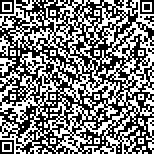张志颖,李春光,苏敏.脑机接口对缺血性脑卒中患者上肢功能影响的近红外脑功能成像研究[J].中华物理医学与康复杂志,2025,47(4):300-306
扫码阅读全文

|
| 脑机接口对缺血性脑卒中患者上肢功能影响的近红外脑功能成像研究 |
|
| |
| DOI:10.3760/cma.j.cn421666-20230704-00537 |
| 中文关键词: 脑机接口 近红外脑功能成像技术 脑卒中 上肢功能 |
| 英文关键词: Brain-computer interfaces Functional near infrared spectroscopy Stroke Upper limb function |
| 基金项目:国家重点研发计划(2022YFC2009700, 2022YFC2009706) |
|
| 摘要点击次数: 1887 |
| 全文下载次数: 1670 |
| 中文摘要: |
| 目的 观察脑机接口(BCI)对缺血性脑卒中后上肢功能障碍患者上肢功能的影响,并采用近红外脑功能成像技术(fNIRS)观察BCI干预前、后患者大脑皮质激活模式的变化。 方法 选择符合标准的缺血性脑卒中后上肢功能障碍患者30例,按随机数字表法将其分为治疗组和对照组,每组患者15例。2组患者均进行常规上肢功能康复训练,治疗组患者在此基础上进行上肢BCI训练,每日训练1次,每次锻炼30 min,每周训练5 d,连续训练4周。于治疗前、治疗2周和4周后采用Fugl-Meyer上肢运动功能评分和改良的Barthel指数评分(MBI)评定2组患者的上肢功能和日常生活活动能力;采用fNIRS检测2组患者患侧半球和健侧半球的运动前区(PMC)、辅助运动区(SMA)和感觉运动区(SMC)的氧合血红蛋白值(HbO2);同时观察2组患者在进行上肢训练时大脑的脑网络拓扑结构的变化规律,并计算其脑网络效率特征。 结果 治疗2周、4周后,2组患者的Fugl-Meyer量表和MBI量表评分较组内治疗前均显著改善(P<0.05)。治疗2周、4周后,治疗组患者的Fugl-Meyer量表和MBI量表评分均显著优于对照组同时间点,差异均有统计学意义(P<0.05)。治疗前,2组患者患侧SMA区的HbO2均显著低于组内其他ROI区(P<0.05)。治疗4周后,治疗组患侧PMC区和患侧SMA区的HbO2较组内治疗前均显著增加(P<0.05),且治疗组患者患侧PMC区的HbO2较对照组同时间点显著增加(P<0.05)。治疗4周后,治疗组的网络效率为0.18678,显著高于对照组同时间点的0.15501,差异有统计学意义(P<0.05)。 结论 在常规神经内科药物治疗和康复治疗的基础上增加BCI训练,不仅可以显著改善脑卒中后上肢功能障碍患者的运动功能和日常生活活动能力,还可增强患者患侧半球PMC区和SMA区的皮质激活,以及各脑区间的网络效率。 |
| 英文摘要: |
| Objective To investigate the effect of brain-computer interface (BCI) training on the upper limb function of stroke survivors and to observe any changes in cortical activation patterns after such training. Methods Thirty ischemic stroke survivors with upper limb dysfunction were randomized into a treatment group (n=15) and a control group (n=15). Both groups were given conventional upper limb rehabilitation training, while the treatment group additionally underwent 30 minutes of upper limb BCI training daily, five days a week for four consecutive weeks. Their upper limb motor functioning was assessed using the Fugl-Meyer assessment (FMA) and their ability in the activities of daily living (ADL) was quantified using the modified Barthel Index (MBI) before the experiment and after two and four weeks. the functional near infrared spectroscopy (fNIRS) was employed to measure oxygenated hemoglobin (HbO2) levels in six regions of interest: the premotor cortex (PMC), the supplementary motor area (SMA), and the sensorimotor cortex (SMC) of the affected and unaffected hemispheres. Changes in brain network topology and network efficiency during the upper limb training were also analyzed. Results After two and four weeks of the treatment, both groups showed significant improvement in their average FMA and MBI scores. The improvement was significantly greater in the treatment group than among the controls, on average. Before the treatment, HbO2 levels in the affected SMA were significantly lower than in the other regions of interest in both groups. However, after 4 weeks the treatment group had significantly increased HbO2 in the affected PMC and SMA, with higher concentrations in the affected PMC than among the control group. The network efficiency in the treatment group was also significantly better than in the control group after four weeks. Conclusions Supplementing conventional neuropharmacological and rehabilitation therapies with BCI training can significantly improve upper limb motor function and the ADL ability of stroke survivors. It enhances cortical activation in the affected PMC and SMA and increases inter-regional brain networks. |
|
查看全文
查看/发表评论 下载PDF阅读器 |
| 关闭 |